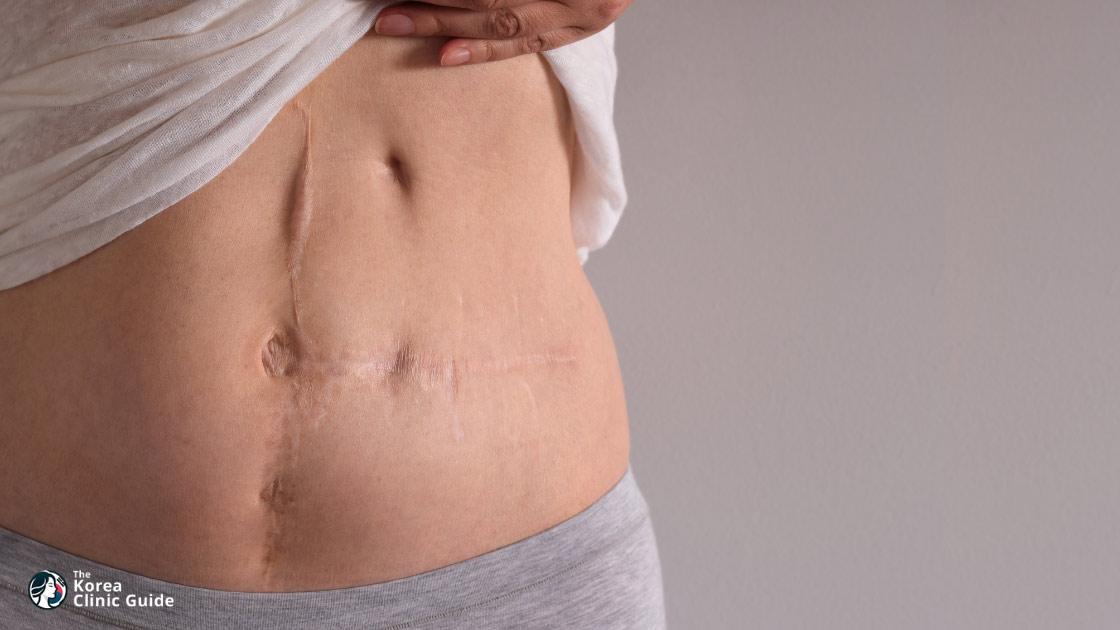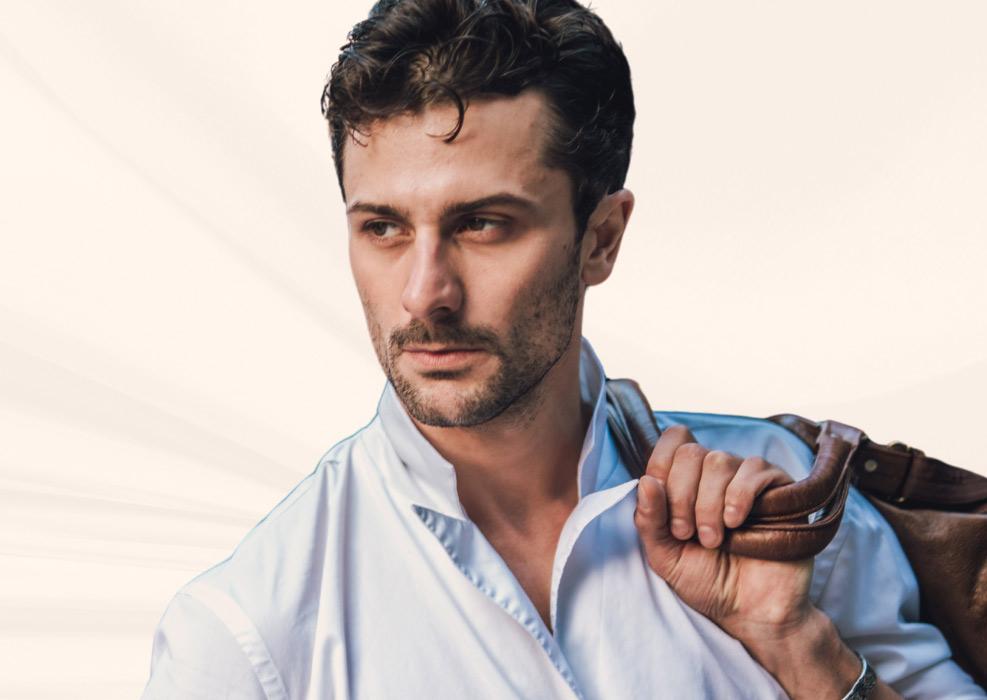Medical Tourism Blog
Scar Removal Laser in Korea (Seoul) | Best Clinics, Costs, Procedure Types & More

Table of contents
- What Is Scar Removal Laser?
- Best Scar Removal Laser Clinics in Korea
- Scar Removal Laser in Korea
- Cost of Scar Removal Laser in Korea
- Alternatives to Scar Removal Laser
- Conclusion
Imagine having access to some of the most advanced scar removal treatments in the world, nestled in the vibrant metropolis of Seoul, Korea, where cutting-edge technology meets skilled craftsmanship to offer life-changing results. Known for its exceptional expertise and innovative approaches, Seoul has become a global magnet for individuals seeking to transform their skin and erase the marks of the past with the power of laser precision.

What Is Scar Removal Laser?
Scar Removal Laser is a sophisticated medical procedure aimed at reducing or eliminating the appearance of scars on the skin. This technology utilizes concentrated beams of light to target scar tissue, promoting the growth of new, healthy skin cells in the affected area. The treatment is highly effective for various types of scars, including acne scars, surgical scars, injury scars, and even some forms of stretch marks.
Who Is It For?
Scar Removal Laser is suitable for individuals who are seeking to improve the appearance of their skin by reducing the visibility of scars. It is ideal for people who have:
- Acne Scars: Those who suffer from post-inflammatory hyperpigmentation or pitted acne scars.
- Surgical Scars: Individuals looking to minimize the appearance of scars resulting from surgical procedures.
- Injury Scars: Those who have scars from accidents, burns, or other injuries.
- Stretch Marks: People with stretch marks due to pregnancy, weight fluctuations, or growth spurts.
- Keloids and Hypertrophic Scars: Those with more raised or fibrous scar formations.
Types of Procedures
Several types of laser treatments are used for scar removal, each with its unique technology and approach:
CO2 Laser Resurfacing
CO2 laser resurfacing is a powerful treatment that uses a carbon dioxide laser to remove the outer layers of damaged skin. This laser breaks down scar tissue and promotes collagen production, leading to smoother and more evenly toned skin. It is particularly effective for deep scars and significant skin irregularities.
Fractional Laser Therapy
Fractional laser therapy focuses on treating scar tissue by creating tiny micro-injuries in the skin. This stimulates the body’s natural healing process. The laser targets only a fraction of the skin at a time, allowing for faster recovery and minimizing downtime. This method is commonly used for acne scars and minor skin imperfections.
Pulsed-Dye Laser
The pulsed-dye laser uses a concentrated beam of light to treat redness and discoloration associated with scars. This type of laser is effective for treating vascular scars and keloids by targeting blood vessels within the scar tissue, reducing redness and improving overall skin appearance.
Erbium Laser Resurfacing
Similar to CO2 lasers, Erbium laser resurfacing is used to achieve milder results with a shorter recovery time. This laser treatment is well-suited for patients with lighter scars and those looking for a less invasive option with minimal downtime.
Procedure Process
The scar removal laser procedure generally involves several steps:
-
Initial Consultation: The process begins with a consultation with a dermatologist or plastic surgeon to assess the type and severity of the scar and determine the most suitable laser treatment.
-
Pre-Treatment Preparation: The patient may be advised to avoid sun exposure and certain medications before the procedure to prepare the skin and minimize risks.
-
During the Procedure: The targeted area is cleansed, and a topical anesthetic may be applied to minimize discomfort. The laser device is then directed over the scar tissue, delivering precise energy to stimulate skin regeneration.
-
Post-Treatment Care: After the procedure, patients are guided on how to care for their treated skin, which may include using gentle cleansers, moisturizers, and avoiding direct sunlight. Mild swelling and redness are common but typically subside within a few days.
-
Follow-Up Treatments: Multiple sessions may be required to achieve optimal results, depending on the scar’s nature and the chosen laser therapy.
Benefits and Considerations
Laser scar removal offers numerous benefits, such as reducing the visibility of scars, improving skin texture, and boosting self-confidence. However, results can vary based on the individual’s skin type, the nature of the scar, and adherence to post-treatment care.
Potential risks include temporary redness, swelling, or discoloration, particularly for individuals with darker skin tones. Therefore, it is crucial to choose a qualified and experienced practitioner to maximize efficacy and minimize any adverse effects.
Best Scar Removal Laser Clinics in Korea
Listed below are the best clinics in Korea:
| Clinic Name | Key Features | Special Techniques |
|---|---|---|
| Modelo Clinic | Premier destination for scar removal and aesthetic treatments, personalized care, tailored treatment plans | Laser treatments for scar removal, Wrinkle Botox, Contour Botox, Fullface and Baby Fillers, Comfort Thermage, Thread Lifting |
| Club Miz Lamiche Clinic | 22 years of clinical expertise, personalized 1:1 treatments, flexible evening hours, convenient location | Ulthera, Thermage FLX/CPT, Fraxel Dual, Legato 2, Excel V, Picosure, Botox, fillers, thread lifting |
| Nana Plastic Surgery Clinic | Advanced aesthetic procedures, personalized care, state-of-the-art facilities | Scar removal laser treatments, breast augmentation, facial contouring, body sculpting, skin tightening and rejuvenation |
Modelo clinic
Modelo Clinic in Korea stands out as a premier destination for scar removal and aesthetic treatments, focusing on enhancing individual beauty rather than following fleeting trends. At Modelo, the emphasis is on maximizing your unique values over time, ensuring that each treatment is tailored to highlight your beautiful individuality. The clinic offers a range of advanced procedures, including laser treatments for scar removal, which are designed to provide effective and lasting results. With a commitment to personalized care, Modelo Clinic ensures that each patient receives a treatment plan that aligns with their specific needs and aesthetic goals.
In addition to scar removal, Modelo Clinic offers a comprehensive suite of cosmetic procedures, including Botox and fillers, specifically optimized for Asian skin and facial structures. Their Wrinkle Botox and Contour Botox treatments aim to provide natural-looking enhancements, while their Fullface and Baby Fillers offer immediate volumizing effects for a youthful appearance. The clinic also provides skin treatments such as lifting and whitening, utilizing advanced techniques to improve skin tone and firmness. Other innovative procedures like Comfort Thermage and Thread Lifting further exemplify Modelo's dedication to achieving harmonious and balanced aesthetics, ensuring that every patient leaves feeling confident and rejuvenated.
Find more about this clinic here: Modelo clinic Website
Club Miz Lamiche Clinic
Since its inception in 2002, Club Miz Lamiche Clinic has established itself as a leader in aesthetic medicine, offering 22 years of clinical expertise. The clinic is renowned for its commitment to personalized care, providing 1:1 customized treatments in private treatment rooms equipped with advanced 4D skin analysis technology. This ensures that each client receives a tailored approach to their unique skin concerns. To accommodate the busy schedules of its clients, the clinic offers flexible evening hours on Monday, Wednesday, and Friday, and remains open on Saturdays. Conveniently located just a short walk from Jamsilsaenae Station on Line 2 and Sports Complex Station on Line 9, Club Miz Lamiche Clinic is easily accessible for those seeking top-tier aesthetic treatments.
Club Miz Lamiche Clinic offers a comprehensive range of aesthetic treatments designed to address various skin concerns, enhance facial features, and promote overall skin health. Their offerings include advanced procedures for lifting and tightening, such as Ulthera and Thermage FLX/CPT, as well as specialized treatments for acne, pores, and scars, including Fraxel Dual and Legato 2. The clinic also provides solutions for pigmentation and redness, utilizing cutting-edge technologies like Excel V and Picosure. For those seeking minimally invasive enhancements, Club Miz Lamiche Clinic offers petit treatments such as Botox, fillers, and thread lifting. With a focus on delivering natural-looking results, the clinic tailors its modern aesthetic procedures to meet the diverse needs of its clients, ensuring improved skin health and satisfaction.
Find more about this clinic here: Club Miz Lamiche Clinic Website
Nana Plastic Surgery Clinic
Nana Plastic Surgery Clinic, conveniently located near Sinnonhyeon Station in Korea, is a leading destination for advanced aesthetic procedures, including scar removal laser treatments. The clinic is renowned for its commitment to excellence, backed by extensive clinical data and a wealth of diverse surgical experience. With a focus on delivering personalized care, Nana Plastic Surgery Clinic offers a comprehensive range of services designed to enhance both appearance and confidence. Their state-of-the-art facilities and expert medical team ensure that patients receive the highest standard of care, making it a trusted choice for those seeking effective scar removal solutions.
In addition to scar removal, Nana Plastic Surgery Clinic provides a wide array of procedures across various specialties. From breast augmentation and facial contouring to body sculpting and lifting procedures, the clinic caters to a diverse clientele with varying aesthetic goals. Their dermatology department offers cutting-edge laser treatments and non-surgical options for skin tightening and rejuvenation. With a holistic approach to beauty and wellness, Nana Plastic Surgery Clinic is dedicated to helping patients achieve their desired outcomes through safe, innovative, and effective treatments.
Find more about this clinic here: Nana Plastic Surgery Clinic Website
Scar Removal Laser in Korea
Scar removal laser treatment in Seoul, Korea is renowned for its advanced technology, experienced practitioners, and impressive results. This procedure involves the use of controlled laser energy to minimize or completely eliminate the appearance of scars caused by acne, surgery, injuries, or other skin conditions.
Initial Consultation
Your journey begins with an initial consultation, where you'd meet with a qualified dermatologist or cosmetic surgeon. During this session, they will assess your scar type, skin type, and overall health to determine if you're a suitable candidate for laser treatment. Detailed medical history and any prior treatments or medications will be discussed to ensure the procedure's safety and efficacy.
Types of Laser Treatments
In Seoul, Korea, clinics offer various specialized laser treatments tailored to specific scar types. The most common laser techniques include:
- Fractional CO2 Laser: Ideal for deeper scars, this method involves creating microscopic wounds to stimulate collagen production and skin regeneration.
- Erbium YAG Laser: Suitable for less severe scars, this laser provides a more superficial treatment with minimal downtime.
- Pulsed Dye Laser (PDL): Often used for red or raised scars, PDL targets blood vessels within the scar tissue to reduce redness and flatten the scar.
Pre-Procedure Preparations
Before the actual procedure, you'll be given specific instructions to prepare your skin. This may involve avoiding sun exposure, discontinuing certain skincare products, and possibly using a prescribed topical treatment. Patients are also advised to avoid aspirin and other blood-thinning medications to minimize the risk of bruising and other side effects.
The Procedure
On the day of the treatment, a topical anesthetic cream is applied to the area to be treated to ensure comfort. Once the anesthetic takes effect, the dermatologist or surgeon will use a handheld laser device to target the scar. The laser energy creates controlled micro-damage, prompting the body’s natural healing process and collagen production. Depending on the scar's size and depth, the procedure can take anywhere from a few minutes to over an hour.
Post-Procedure Care
Following the treatment, you might experience redness, swelling, and a mild stinging sensation, similar to a sunburn. These side effects are typically short-lived and subside within a few days to a week. Most clinics will provide detailed aftercare instructions, which usually include:
- Applying a Healing Ointment: To keep the treated area moisturized and promote healing.
- Avoiding Sun Exposure: The freshly treated skin is highly sensitive to sunlight. Using a high-SPF sunscreen and wearing protective clothing is essential.
- Gentle Skincare: Avoiding harsh skincare products and exfoliants for a prescribed period to prevent irritation.
Follow-Up Sessions and Results
Achieving optimal results typically requires multiple treatment sessions, spaced several weeks apart. The exact number of sessions varies depending on the scar's severity and the type of laser used. Visible improvement can often be seen after the first treatment, with gradual enhancements after each subsequent session.
In Korea, the approach to scar removal laser therapy is highly personalized, ensuring that each patient receives the most effective treatment plan. With a combination of cutting-edge technology and expert care, patients can expect significant improvements in their skin's appearance and texture.
Cost of Scar Removal Laser in Korea
Scar removal laser treatments in Korea have gained significant attention due to their efficacy and affordability. The cost of these treatments can vary widely depending on several factors including the clinic, the type of laser technology used, and the specific requirements of the patient.
Treatment Costs
On average, a single session of scar removal laser treatment in Korea can range from $100 to $300 per session. It is common for patients to require multiple sessions to achieve optimal results, with the total cost depending on the number and type of treatments. Some clinics offer package deals that can slightly reduce the overall expenditure.
Additional Expenses
While the cost of the treatments themselves is a crucial consideration, it's important to account for additional expenses associated with medical tourism.
Flight Costs
Flights to Korea can vary significantly based on your point of departure, the time of year, and the airline. On average, a round-trip flight from the United States or Europe to Korea can range from $600 to $1,500.
Accommodation
Korea offers a wide variety of accommodation options to suit different budgets. You can expect to pay anywhere from $50 to $200 per night for a hotel room. For a week-long stay, this could add an additional $350 to $1,400 to your expenses.
Local Transportation
Travel within Korea is generally affordable, and the country boasts an efficient public transportation system. Local travel expenses, including taxis and public transport, might amount to around $100 to $200 for a week.
Food and Miscellaneous Costs
Dining in Korea can be quite economical, with average daily food costs ranging from $10 to $30 per day per person. Miscellaneous costs, including sightseeing and shopping, could add another $100 to $300 to your total budget.
Summary of Costs
Combining treatment costs with travel and accommodation expenses provides a comprehensive picture of the financial commitment involved. For a typical visit involving multiple treatment sessions, round-trip airfare, accommodation, and other expenses, patients may expect to invest anywhere from $1,500 to $5,000. This estimate varies based on individual needs and preferences but offers a baseline for planning purposes.
Making a detailed budget and consulting directly with clinics can help ensure that you’re financially prepared for your scar removal journey in Korea.
Alternatives to Scar Removal Laser
While laser treatments are a popular method for addressing various types of scars, including keloids, hypertrophic scars, atrophic scars, and acne scars, there are several other effective options available. Here are three noteworthy alternatives:
1. Topical Treatments
Topical treatments are a non-invasive option that can significantly aid in scar reduction. These treatments often include:
- Silicone Gel Sheets and Ointments: These are commonly used to flatten and soften raised scars, including hypertrophic scars and keloids.
- Corticosteroid Creams: Useful in reducing inflammation, redness, and itching associated with scars.
- Onion Extract Gels: Marketed under brand names like Mederma, these gels are believed to reduce the appearance of scars through the anti-inflammatory and bacteriostatic properties of onion extract.
Topical treatments are convenient and can be used at home, though they require consistent application over an extended period to see noticeable results.
2. Microdermabrasion
Microdermabrasion involves the mechanical exfoliation of the outermost layer of dead skin cells. This technique can improve the appearance of superficial scars by promoting skin regeneration and collagen production. Microdermabrasion is especially effective for atrophic scars and minor acne scars.
The procedure is typically performed by dermatologists or licensed skincare professionals and involves minimal downtime. Multiple sessions may be required to achieve optimal results.
3. Chemical Peels
Chemical peels involve the application of acidic solutions to the skin, which helps in peeling away damaged outer layers. This process can significantly improve the texture and tone of the skin and is effective for treating various types of scars, including acne scars and hyperpigmented scars.
- Superficial Peels: Use mild acids like alpha hydroxy acid (AHA) to gently exfoliate the outer layer of the skin.
- Medium Peels: Use trichloroacetic acid (TCA) to penetrate into the middle layers of the skin for more effective treatment of deeper scars.
- Deep Peels: Use phenol, a strong acid, to remove deeper layers of skin, primarily used for more severe scarring.
Chemical peels can vary in downtime and intensity, so it is essential to consult with a dermatologist to determine the most suitable type of peel for your skin and scar type.
These alternatives to laser treatments provide various options for individuals seeking to treat and improve the appearance of scars, each with its own set of advantages and considerations. Consulting with a board-certified dermatologist is crucial to tailor the most effective treatment plan based on individual skin types and scar characteristics.
Conclusion
In conclusion, laser scar removal in Korea has emerged as a highly effective and popular solution for those seeking to improve their skin's appearance and regain confidence. Harnessing advanced technology and expertise, Korean clinics offer cutting-edge treatments that cater to a wide range of scar types with minimal downtime and discomfort. The combination of skilled practitioners, state-of-the-art equipment, and a dedicated focus on patient care makes Korea a premier destination for individuals looking to achieve smoother, clearer skin. As the medical tourism industry continues to grow, Korea stands out as a beacon of innovation and excellence in the field of aesthetic dermatology.















